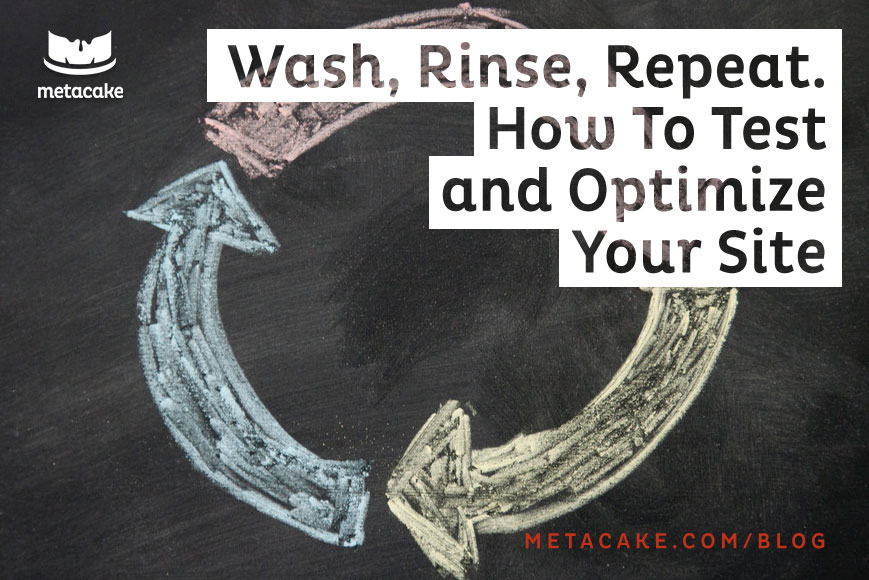Before you read any further, take this quick test:
- Do you have a website?
- Does your website have traffic?
- Are you testing your website in order to optimize it?
If you answered yes to numbers 1 and 2, you’re making a mistake if you’re not also investing in testing and optimizing.
So how should you test your site?
All you need is a website, something you want to test, and a great web-based tool to help you out. (We use Optimizely because it’s a small company doing really innovative work. But most importantly, it makes testing and optimizing simple to do.)
Setting Up the Test
When we test a site, we ask the initial question: What’s the purpose of this site or mobile application?
Then, we ask supporting questions:
- What is the site or page supposed to do?
- Is it working?
- What are the quantifiable elements on the page?
- How can we make this page better?
Many times, pages being tested involve ecommerce, or making more money. If that’s the case, you”ll want to test elements of the user experience that are likely to have an impact on whether or not a visitor converts.
There are a lot of factors on a page that can impact what the user will do once they get there. When you’re starting to plan a testing strategy, begin with a mixture of the following variants:
- Headline
- Images
- Calls to action
- Buttons
- Placement
- Text styling
- Effectiveness of videos vs. images
- Removing elements from the page to focus the user
Also, keep in mind what brought the user to the page in the first place.
For example, if a user came to the page we’re testing from an ad, we want the copy on the page to reflect the copy they saw in the ad. If they’re being directed from an email campaign that featured certain imagery, we want to give them that same imagery so there is context with the email.
How We Test
We develop testing strategies that are driven by brand and business objectives. With those items in mind, we follow these steps:
- Identify the areas of quickest return or best value. Often the pages that are being tested are in the checkout flow – like the product detail page or the shopping cart – but could also be the home page or landing pages.
- Determine the top priorities on a page. Then, develop sets of hypotheses. For example, if the page has a high exit rate, perhaps it is confusing and we need to test the way we present the main CTAs.
The elements that we look at are based on analytics, heat maps, and suggestions from different platforms, but also from our own experience.
Copy, user experience, and visual look and feel should all be driven by the brand. And this process takes time. It’s not simply a matter of “does this convert better right now?” but also, “how will it appeal to customers in the long term?”
Putting the Wheels in Motion
Classic A/B testing allows you to test one variant against another variant, but many platforms also make it easy to test multiple variables at one time to help you understand which different combinations of elements might work best.
In order for testing to work, your site has to offer what the platform would call “statistical significance in the sample data.” Basically, you need to have enough traffic for the test results to be considered accurate. Most testing platforms will let you know whether or not your test is statistically significant.
Just remember the more variables you’re testing at once, the more traffic you’ll need.
So if your site doesn’t have a lot of traffic, keep your testing simple and the number of variants low. (Want to learn more about multi-variant testing? Read What is Multivariate Testing?)
Whatever you do, don’t call a test early! It is not uncommon for one variation to take off and appear to be a clear winner, only to have the results even out over the next few days.
Interpreting and Implementing the Results
Once you’ve conducted a test, you need to be able to question and interpret the data. And then you need to make decisions about the results.
Data doesn’t lie, but it’s always good to ask yourself this question before making any major site changes: If you take the action that the data suggests, will it work with your brand?)
Once you’ve interpreted the data, you implement the changes and continue to monitor page performance.
The next step? Wash, rinse, repeat – because you should never stop optimizing your site.
You should constantly be looking for ways to make it better and more effective. The traffic is already there – it’s up to you how many will stick around and convert.
